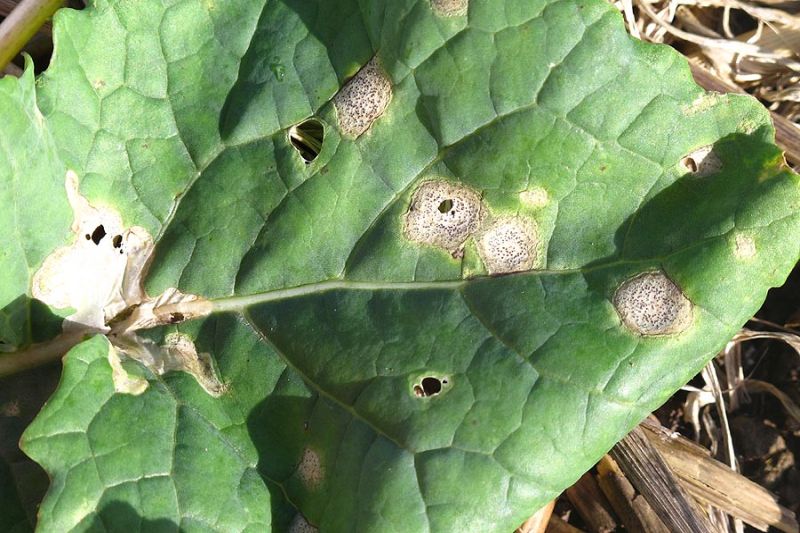
Some winter oilseed rape may already have 10 percent of the crop affected by phoma, according to a forecast looking at the disease.
A monitoring site in Herefordshire, run by ADAS Rosemaund, is the first predicted to reach this infection level, which indicates the need to consider treatment in some situations.
Phoma leaf spot/stem canker is one of the most important diseases of oilseed rape.
The disease is predicted to result in losses of about £100m each season despite fungicide treatment, according to AHDB.
Crops usually start to breach treatment thresholds in October. Compared to 2018/19, a later disease onset is forecast for most sites.
However, phoma onset appears to have started relatively early this autumn at some locations.
Catherine Harries, who manages disease research at AHDB, said: “Late-summer and early autumn rain speeds up the maturation of phoma spores on stubble.
“In some areas, it was relatively wet over this critical period; hence, the potential early onset. In fact, there have been some field reports of early spotting in crops.
“Naturally, there’s a lot of variation. For example, the South East was very dry up to a week ago and that tends to delay development.
“People should check the forecast, monitor for spots and treat susceptible varieties, when thresholds are reached,” she said.
Temperature and rainfall information is used to simulate the development of Leptosphaeria maculans, a key pathogen responsible for phoma leaf spot and phoma stem canker.
Accounting for subsequent crop infection, the forecast predicts the date when 10% of oilseed rape plants could potentially show symptoms of phoma leaf spot.
This level of infection relates to a treatment threshold for varieties with lower disease ratings for stem canker.
